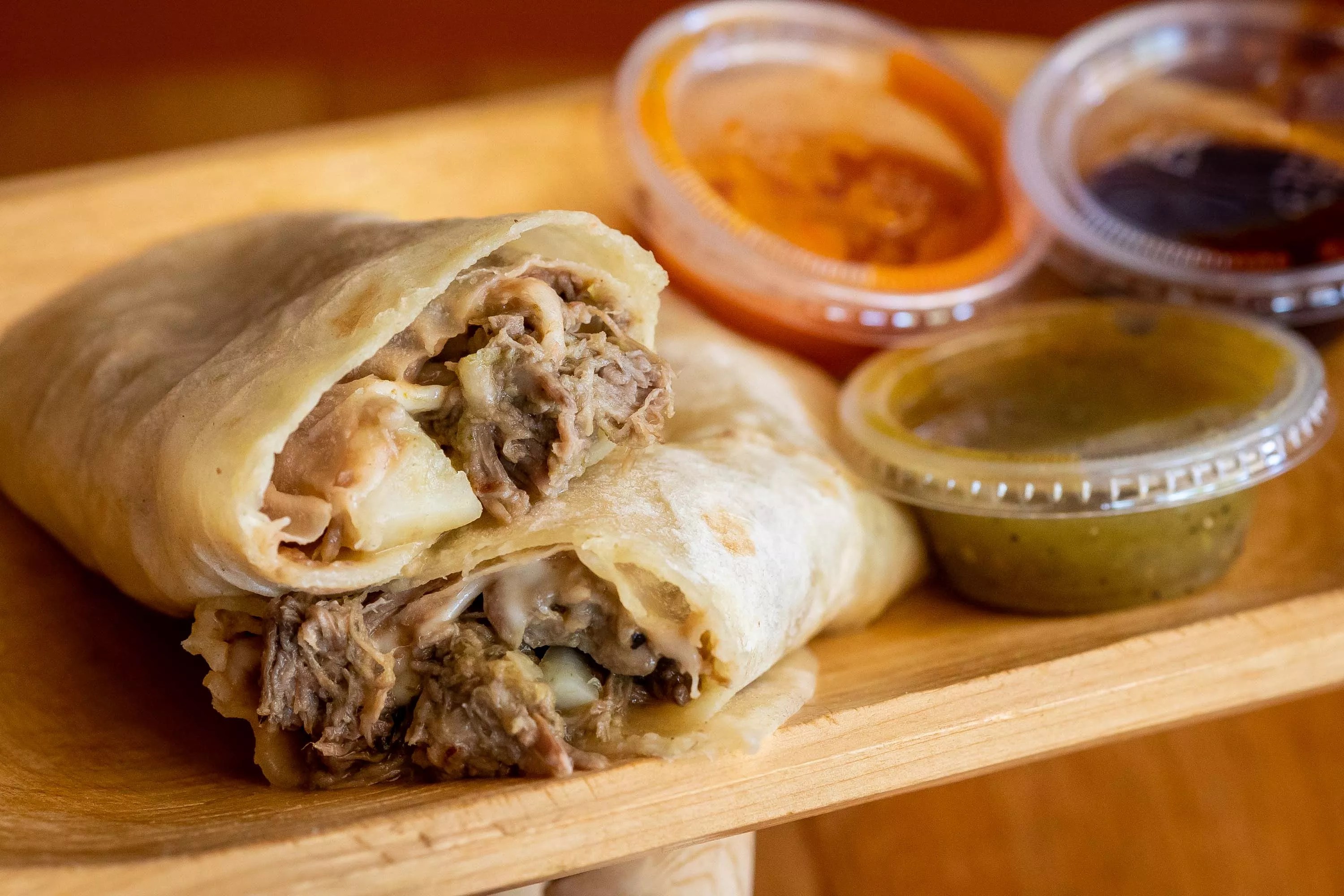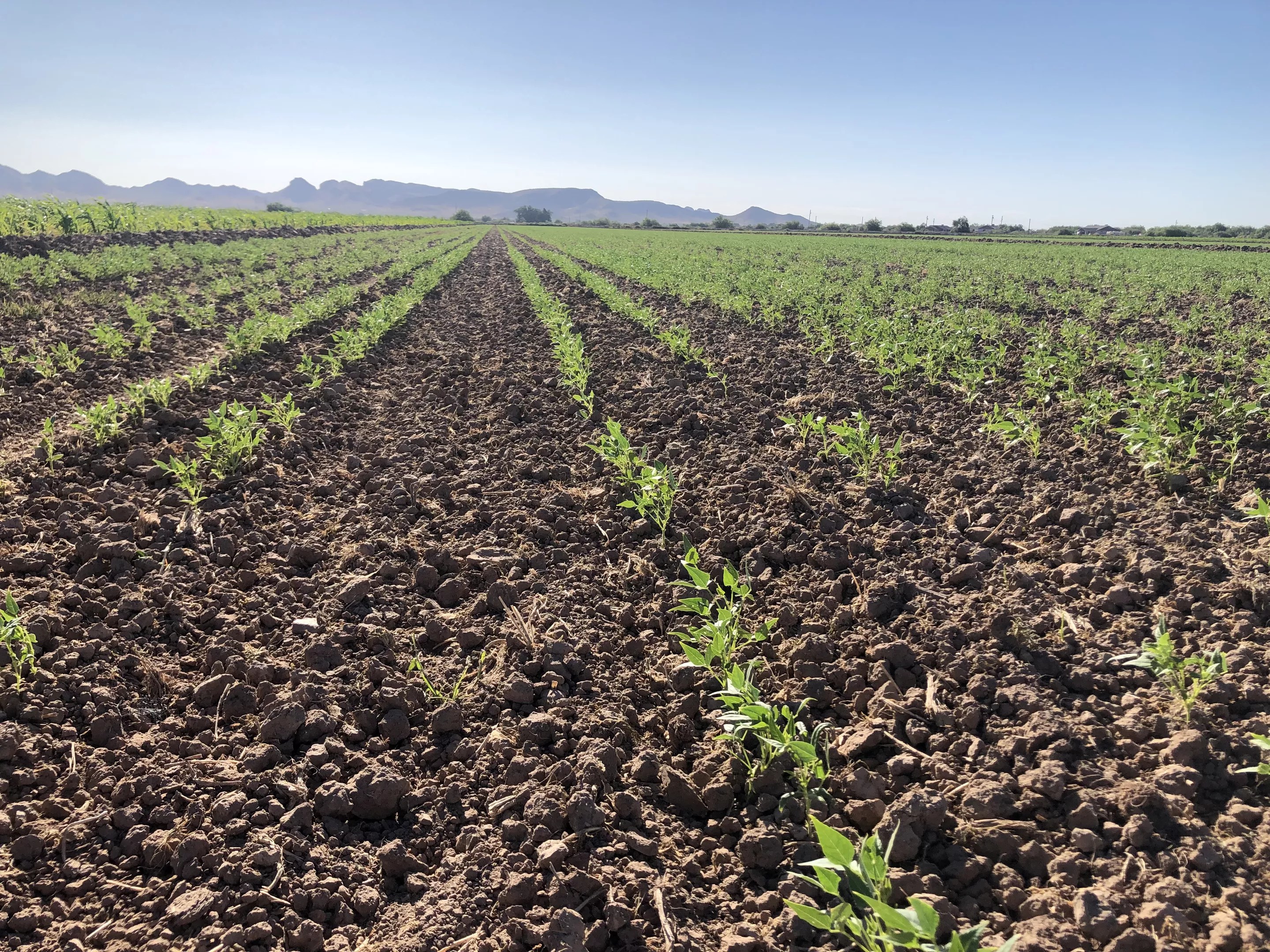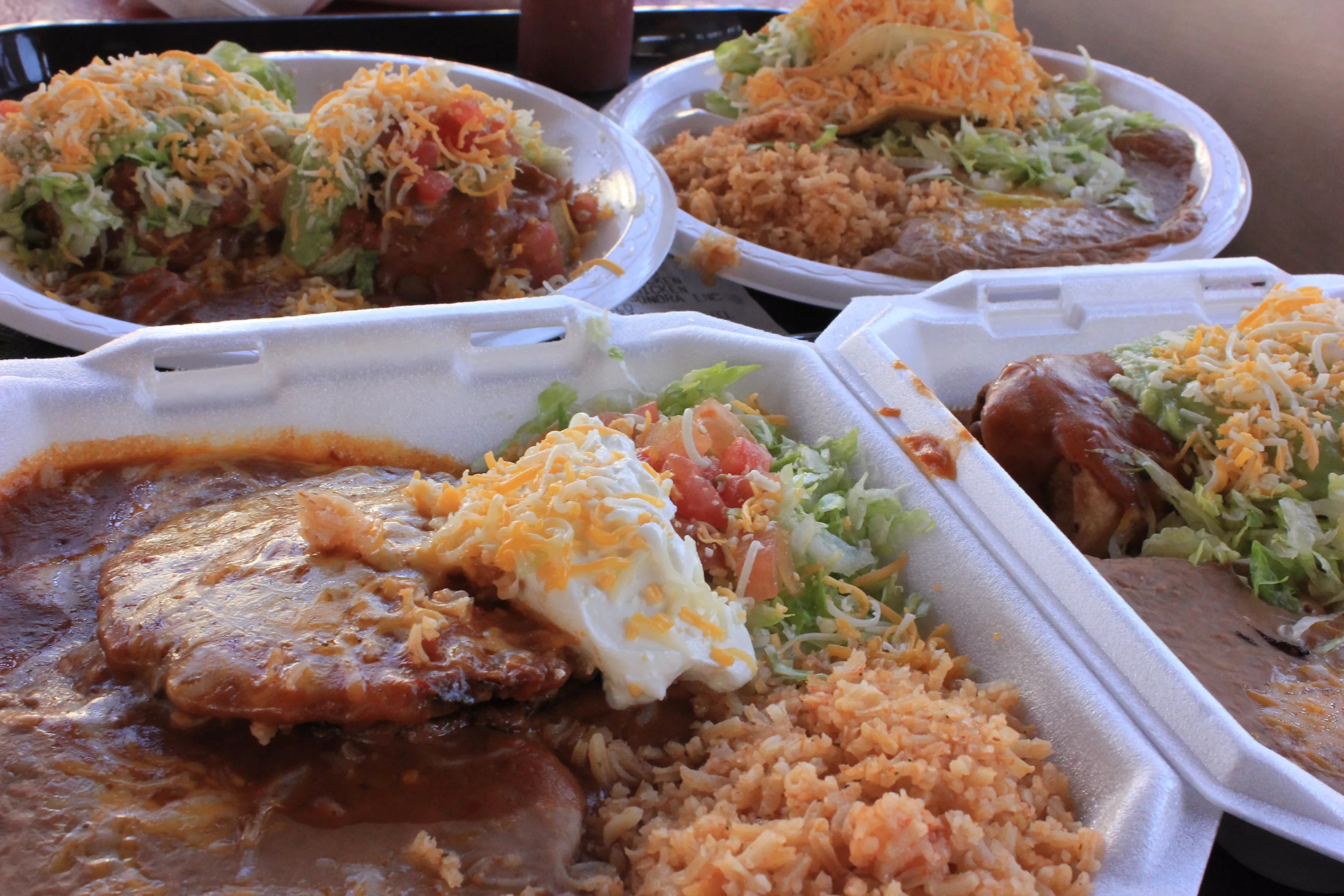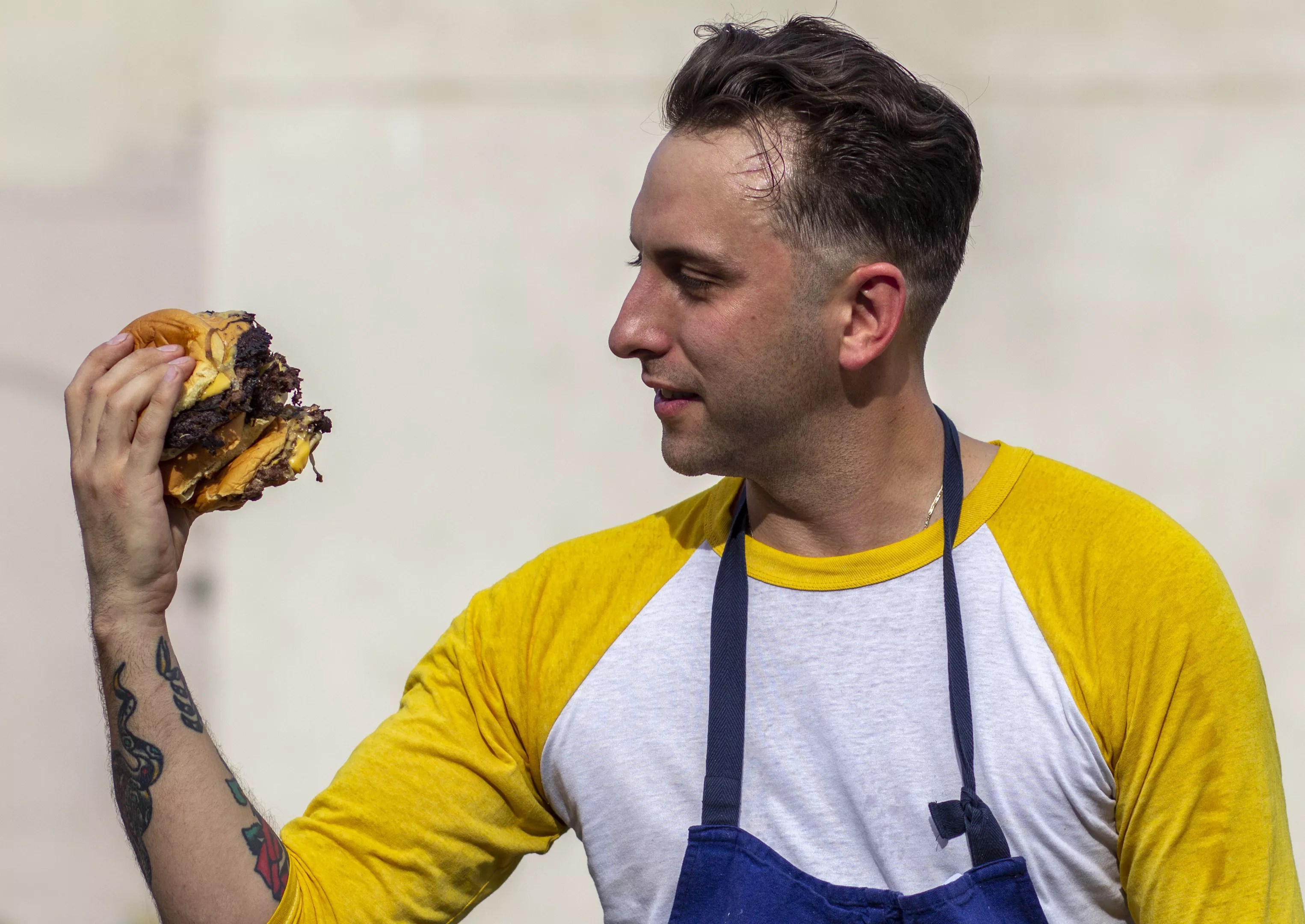
Jacob Tyler Dunn

Audio By Carbonatix
In past years, we’ve made pretty lighthearted food predictions heading into a new year: wood-fired cooking, greater use of Arizona ingredients, the rise of pop-ups, and so on. I believe that today’s moment-in-food, a moment of mid-pandemic uncertainty, labor challenges, and inflating food prices, calls for more than mere dining trend forecasting.
How will the foundational pillars of food and eating change in 2022 and beyond? Based on the evidence and issues of today, we seem to be facing down a storm of growing challenges, some small, others mighty. As we look to a new year, here are a few rising food “trends” to keep top of mind.

On Ramona Farms, rows of tepary beans point to mountains.
Chris Malloy
1. More People Start to Eat for Climate
For years, many restaurants and conscious diners have assigned great importance to how ingredients have been produced. Local farm? Organic or beyond-organic methods? Animal-treated right? These are questions to consider when deciding how, where, and what to eat.
This year, make your gift count –
Invest in local news that matters.
Our work is funded by readers like you who make voluntary gifts because they value our work and want to see it continue. Make a contribution today to help us reach our $30,000 goal!
How often, though, do you see restaurants or point-of-sale vendors tout that food that is climate-friendly, meaning that it contributes minimally to or even counteracts climate change? Further, how many people could say, without Googling, which foods are best to eat for the earth?
As of now, climate change doesn’t figure much into diet. It should. Beef, even grass-fed beef, is one of the worst foods for the planet. Nuts and beans rank at the other end; they can actually counteract climate change. This isn’t common knowledge, but it may be soon, as the urgency to minimize climate changes increases with drought severity and temperatures. And if it does, we have climate-friendly foods available locally, like mesquite and the mighty tepary bean.

An array of Mexican lunch staples from El Norteño.
Chris Malloy
2. RIP Lunch?
The highlight and salvation of the 9-to-5 workday is the hour sandwiched between morning and afternoon: lunch. Come midday in places with clusters of offices, like downtown Phoenix, streets fill and buzz with people filing into ramen shops, hot chicken joints, and taquerias. Or rather, this was how the lunch scene looked in urban business districts once upon a time.
In the Covid age, lunch rhythms have changed.
This is largely because more workers are remote. Lunch, formerly a cultural and social touchstone for workers and restaurant owners’ balance sheets, now often happens quickly in home kitchens. This shift costs restaurants business, and many workers their former lunch culture. This prediction is more out there and less consequential than the others to everyone but restaurant operators who depend on high lunch numbers. Still, I wonder how lunch culture in downtown districts will fare in the age of the remote office worker.

A Dumpster in its natural environment.
Lauren Cusimano
3. Influencers Keep Food Bland
Influencers shape our food scene more than you probably realize, and in many quietly ugly ways. By food influencers, I mean people who have garnered large numbers of followers for doing little but posting food visuals to social media.
You won’t see food influencers meaningfully covering social issues, climate change, farming, Indigenous foodways, or any of the other vital topics of our place and time. You won’t see them doing much more than posting close-up shots stripped of story, history, and nuanced context.
The rise of food influences and the concurrent decline of local food media have many ripples. One is that restaurants with the investors, budgets, and marketing agencies to swing fancy events and free meals and have their PR messages pass unfiltered to consumers are more likely to succeed than honest mom-and-pops. When most food media consists of vapid social media, the rich, deep details of the conflicts, stories, and cultures behind food get lost. Everything becomes shallow.
So what, you might ask? These ripples widen with time. With less informed criticism, the restaurants that unduly get public attention are more likely to succeed and expand. Actual informed coverage helps shape the eaters and restaurants of a food scene. Without it, things can run off course, and a restaurant scene and food culture might become watered down over the years.

James Piazza of Bad Jimmy’s, a burger pop-up.
Tom Carlson
4. Compressing Margins Squeeze Creativity
Earlier this year, I wrote about the rise of food pop-ups. One of the main threads was that the conditions of cooking professionally have changed, driving many young and mid-career chefs to start pop-ups rather than pursue more conventional work-up-the-ladder restaurant careers. Why? What are some of the obstacles?
For obvious reasons, the pandemic has made dining indoors more difficult, even in December 2021. Further, food prices are up due to supply chain issues (caused by the pandemic) and inflation (caused by loose U.S. monetary policy). For many months, the food scene has faced massive labor challenges. Food workers are less likely to work at pre-pandemic rates and to old-school hospitality standards due to many factors, including pay, work conditions, and others. Across the Valley, restaurant operators are facing labor shortages.
Now, the hard business of running a restaurant has become harder. Easier days don’t look to be coming anytime soon. To keep the lights on and the stoves hot, chefs and owners have to tighten already-tight margins. Over time, this pressure might suppress creativity and experimentation. Indeed, many of the restaurants that have closed since the pandemic began have been among our most creative.
But then again, cooks have risen to this challenge. Faced with these obstacles, many have gotten creative in new ways: pop-ups, collaborations, food side hustles, embracing honest comfort foods, and generally adapting and routing creative energy to new places.